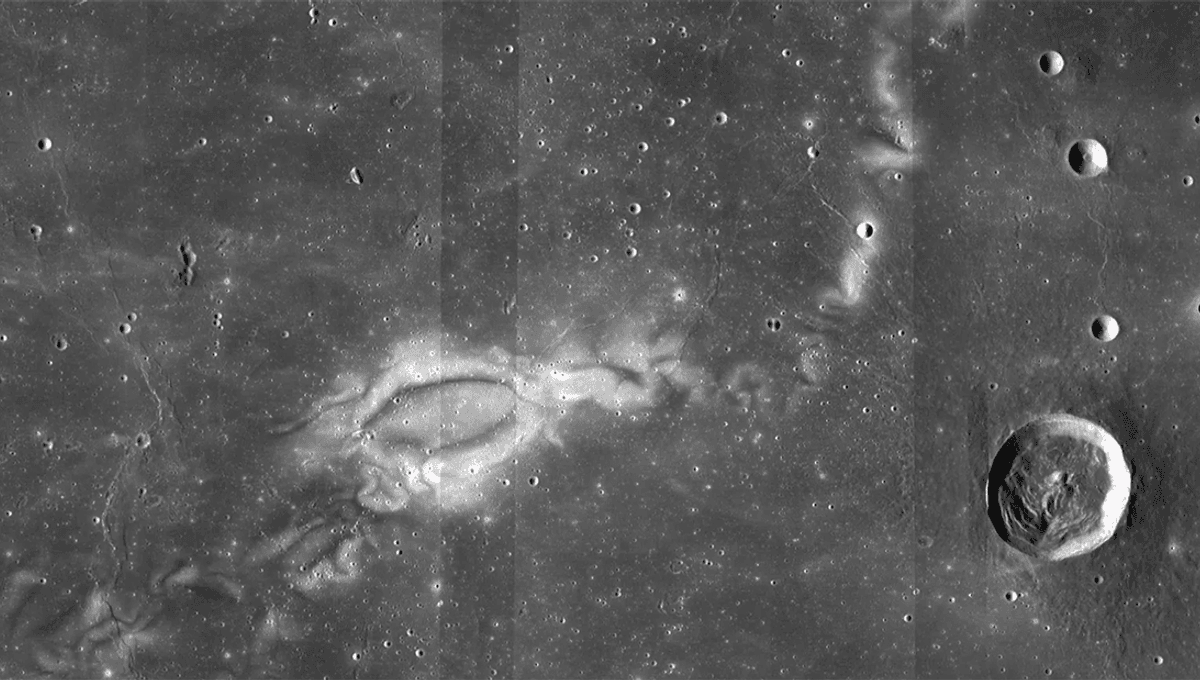
A new study has taken a look at the weird “lunar swirls” seen on the Moon, and identified a possible cause beneath the lunar surface.
When humanity first developed telescopes and began examining the Moon in closer detail, we noticed some odd features. Using early telescopes in the 1600s, astronomers were able to see strange swirling patterns on the Moon’s surface. Reiner Gamma, one of the most famous and distinct of these features, was first seen during the Renaissance, but has continued to puzzle scientists right through the space age, when it was discovered that they correspond to magnetic anomalies in the rock.
“Lunar swirls are enigmatic features on the Moon’s surface characterized by bright streaks in the lunar soil that are much brighter than the surrounding regolith,” NASA explains. “All lunar swirls are located where crustal magnetic anomalies have been detected, but not all such magnetic anomalies have the swirly markings, making lunar swirls an intriguing puzzle yet to be solved.”
Scientists believe that the swirls could be caused by magnetized rocks deflecting or redirecting solar wind particles which constantly hit the surface of the Moon. Over time, the neighboring rocks become darkened by the solar wind, while the magnetized rock maintains its pale appearance.
However, it’s a bit of a mystery how these rocks became magnetized in the first place, given that the Moon does not have a magnetic field today. Previously, it has been suggested that impactors rich in iron could play a role.
“Impacts could cause these types of magnetic anomalies,” Michael J. Krawczynski, an associate professor of earth, environmental and planetary sciences in Arts & Sciences at Washington University in St. Louis said in a statement. “But there are some swirls where we’re just not sure how an impact could create that shape and that size of thing.”
An alternative idea is that the magnetic anomalies were created by lava under the surface slowly cooling in a magnetic field. That’s pretty difficult to study without lunar rocks.
“Earth rocks are very easily magnetized because they often have tiny bits of magnetite in them, which is a magnetic mineral,” Krawczynski said. “A lot of the terrestrial studies that have focused on things with magnetite are not applicable to the Moon, where you don’t have this hyper-magnetic mineral.”
In a new study, the team from Washington University in St. Louis tested whether this could be possible, using a natural terrestrial ilmenite megacryst as an analog for material on the lunar surface. Ilmenite – a titanium-iron oxide that is abundant on the Moon – can react to form iron metal, and the team discovered that the minimum thresholds in magnetization needed to form the swirls could be formed through heating if the ambient field was strong enough.
“The smaller grains that we were working with seemed to create stronger magnetic fields because the surface area to volume ratio is larger for the smaller grains compared to the larger grains,” first author Yuanyuan Liang added. “With more exposed surface area, it is easier for the smaller grains to undergo the reduction reaction.”
While the study shows evidence that the swirls could be created by this method, it would need further support in what we see on the Moon.
“If you’re going to make magnetic anomalies by the methods that we describe, then the underground magma needs to have high titanium,” Krawczynski said. “We have seen hints of this reaction creating iron metal in lunar meteorites and in lunar samples from Apollo. But all of those samples are surface lava flows, and our study shows cooling underground should significantly enhance these metal-forming reactions.”
Time to get drilling on the Moon.
The study is published in the Journal of Geophysical Research: Planets.
Source Link: Cause Of Mysterious Lunar Swirls Might Be Below The Moon's Surface